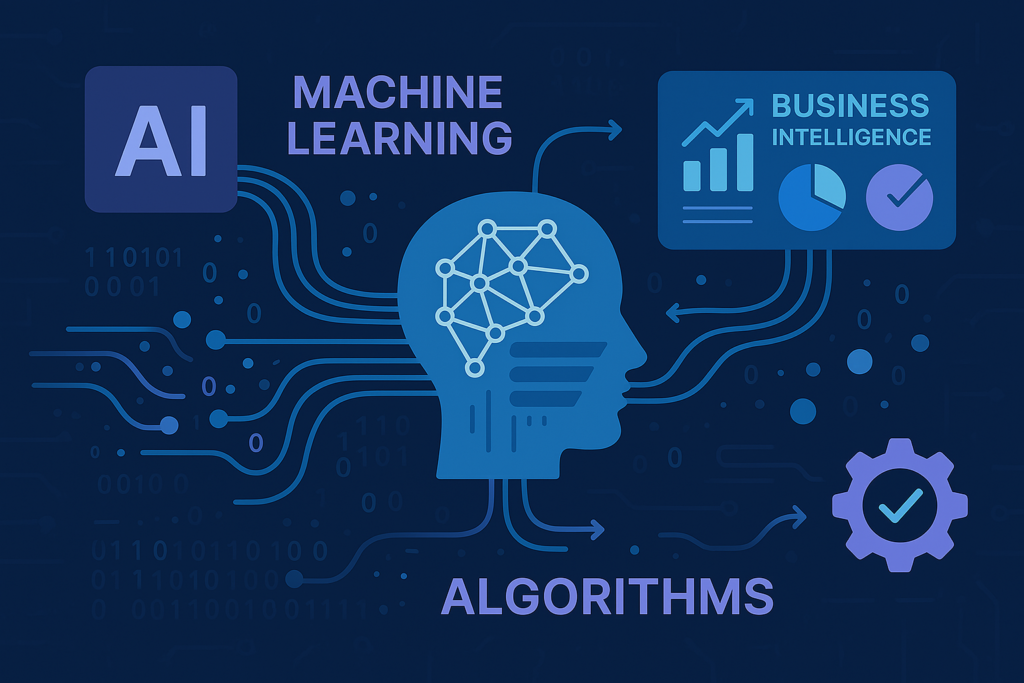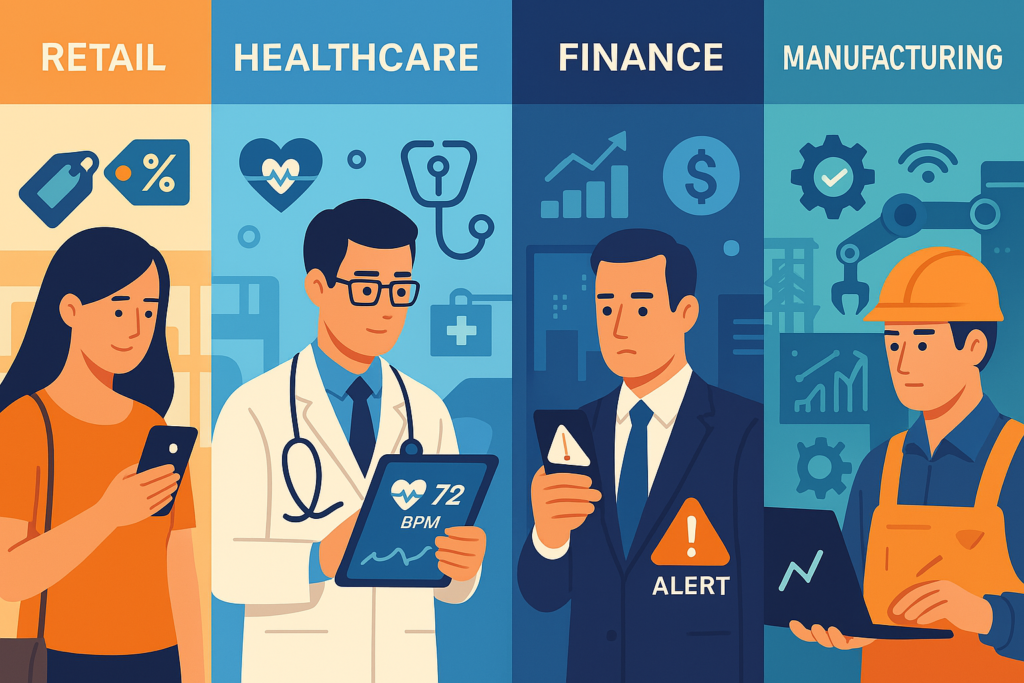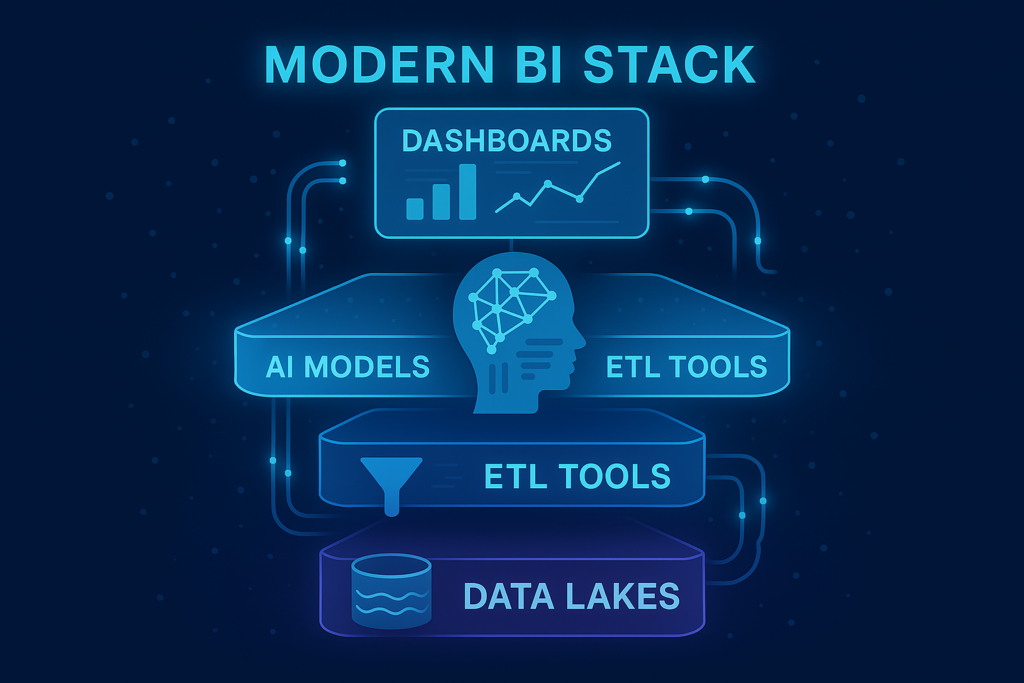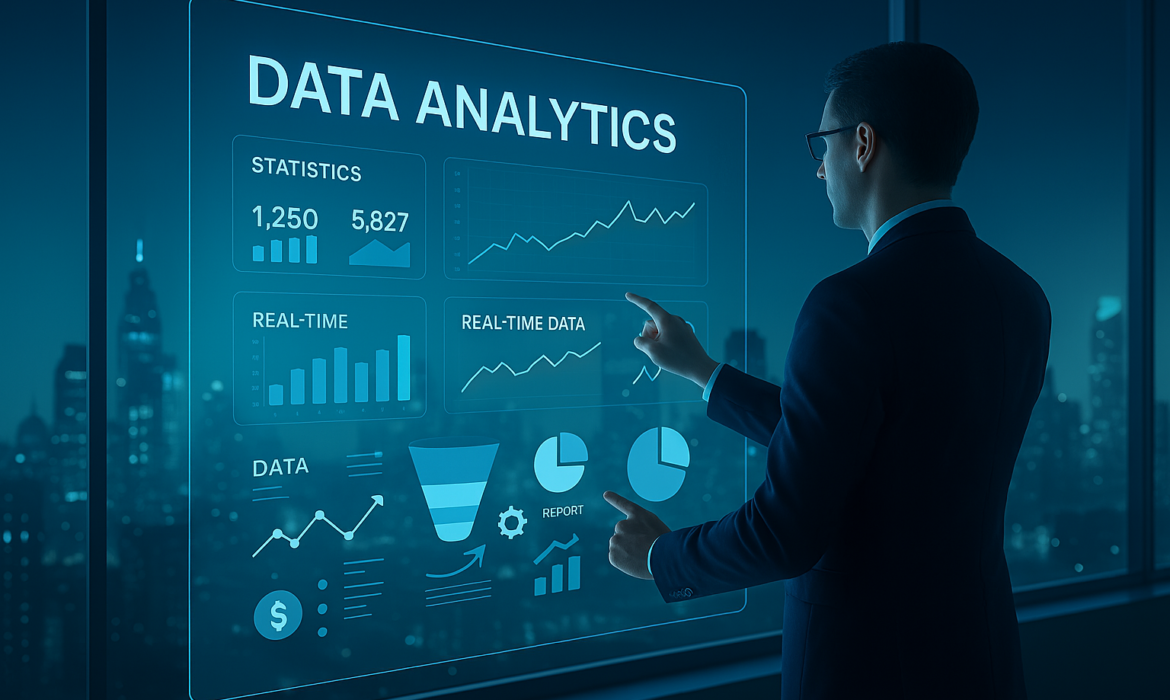How Data Analytics is Fueling Smarter Business Intelligence Transformationin 2025

Introduction: The Age of Intelligent Insights
The gap between industry leaders and laggards in today’s digital-first economy is based on intelligence rather than merely product quality or marketing expenditures. From static reporting tools, business intelligence (BI) has developed into dynamic, strategy-predictive engines. And data analytics is at the core of this change.
By 2025, data analytics will be the driving force behind the most progressive choices; it will no longer be an option. Businesses who are able to turn raw data into strategic insight are differentiating themselves in terms of agility, efficiency, and customer pleasure as a result of the growing volumes of data being generated every second. This blog examines the patterns influencing change, how data analytics is influencing business intelligence going forward, and how businesses are acting on these discoveries.
The Evolution of Data Analytics in Business Intelligence

Modern analytics-driven intelligence is replacing traditional business intelligence in a technological and cultural way. Traditional BI systems looked backwards, reporting on events as they occurred. The analytics platforms of today look forward, predicting future events and suggesting appropriate actions.
Several breakthroughs are driving this shift:
1. Artificial Intelligence and Machine Learning (AI/ML)
Analytics solutions that use machine learning models are now able to spot trends and abnormalities that are impossible for humans to notice. Businesses may more accurately predict sales, inventory demand, and customer attrition with the use of predictive analytics. AI is also capable of automating real-time decision-making, such as dynamically modifying prices or identifying possible fraud.
Gartner predicts that by 2025, 80% of business intelligence will be augmented by AI to automate insight discovery and reduce manual analysis.
2. Real-Time Analytics and Streaming Data
It’s important to move quickly. By 2025, companies will have shifted from batch processing to real-time analytics. Businesses may handle data as it is created with the use of tools like Apache Kafka and cloud-native systems, which enables quick reactions to changes in the market, customer behavior, and operational problems.
3. Natural Language Processing (NLP) and Conversational BI
Business users can utilize natural language processing (NLP) to ask queries in plain English and receive immediate visual responses. NLP has been included into platforms such as Tableau and Microsoft Power BI to democratize data access and lessen dependency on data specialists.
4. Advanced Data Visualization
Storyboards, heatmaps, and interactive dashboards are replacing static information. Clarity and action are more important than beauty when it comes to visualization. The journey from insight to impact is shortened by a well-designed dashboard.
Industry Use Cases: Where Data Analytics Meets BI

Retail: Personalized Customer Journeys
Retail behemoths like Amazon optimize delivery routes, customize discounts, and make product recommendations using real-time customer data. Businesses who use data to personalize consumer experiences report a 25% increase in revenue, according to McKinsey.
Healthcare: Predictive Patient Care
Predictive analytics is used by institutions such as the Mayo Clinic to identify individuals who are at a high risk of complications. They’ve cut emergency response times by more than 30% using AI-enhanced diagnostics and real-time monitoring.
Finance: Fraud Detection and Credit Scoring
PayPal detects fraudulent activity instantly by processing more than 1,200 events per second using data analytics. Banks can reduce defaults and provide loans responsibly with the aid of predictive credit models.
Manufacturing: Predictive Maintenance
Businesses like Siemens use IoT sensors and machine learning to execute predictive maintenance on their equipment, maximizing asset lifecycles and preventing expensive unscheduled downtime.
Building the BI Tech Stack of 2025

To harness these benefits, businesses must invest in a robust analytics infrastructure. A typical 2025-ready stack includes:
Data Lakes (e.g., AWS S3, Azure Data Lake) for scalable storage
ETL Tools (e.g., Talend, Apache NiFi) for data ingestion
Analytics Platforms (e.g., Power BI, Looker, Tableau) for visualization
AI/ML Models for forecasting, clustering, and classification
Governance Tools to ensure compliance with GDPR, HIPAA, etc.
Future Outlook: The Next Phase of Intelligence
In 2025, the BI revolution will be further accelerated by the confluence of analytics with other technologies, such as blockchain for data integrity or quantum computing for quicker processing. Data fluency is becoming a fundamental corporate ability as a result of the demand for data literacy across all departments.
Recommendations for Businesses:
Invest in analytics tools that scale and support AI integration
Train your teams in data literacy to foster a culture of evidence-based decision-making
Ensure data quality and compliance through robust governance
Pilot use cases in departments that can generate quick wins (like sales or marketing)
Collaborate across departments to break silos and unify insights
Conclusion
In 2025, data analytics is business intelligence itself, not just a tool to support it. Businesses that integrate analytics into their core values are more adaptable, customer-focused, and prepared for the future. Strategies need to change as technology does. Those that use data as a compass for the future rather than merely a record of the past will be the ones who prosper in the future.



